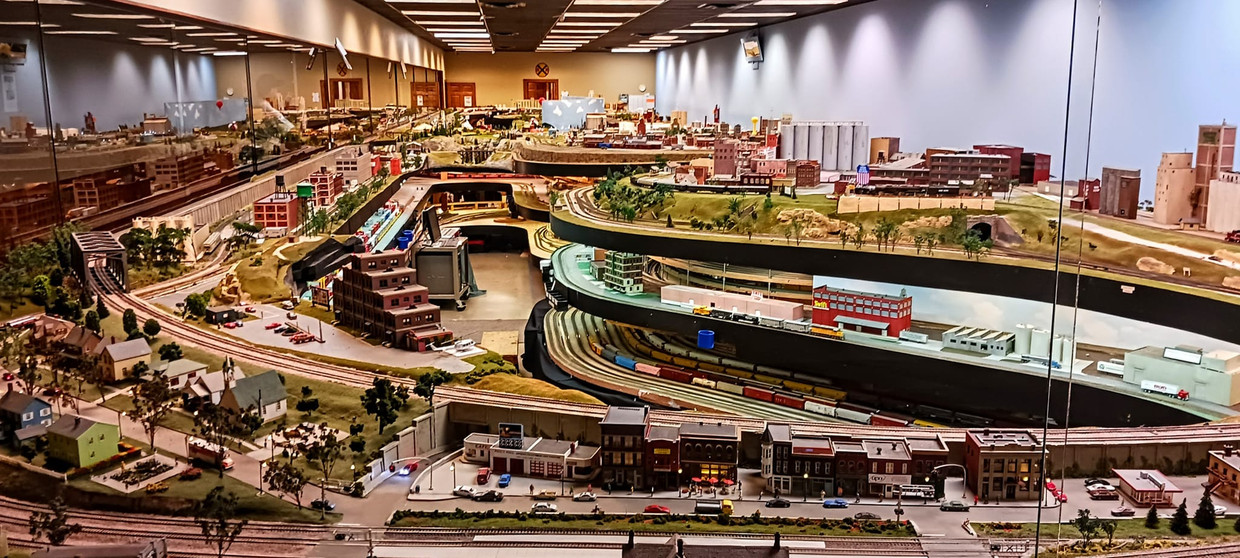Troubleshooting and Maintenance Tips for Model Trains Enthusiasts
Model trains are a delightful hobby that brings the magic of railways right into your living space. Whether you're a seasoned model train enthusiast or just starting out, troubleshooting and maintenance are two aspects that can greatly enhance your experience. In this article, we'll delve into the common issues beginners often face and provide practical solutions. Additionally, we'll discuss the importance of regular maintenance to ensure your layout stays in top condition.
Common Issues Beginners Face and How to Resolve Them
Track Connectivity Problems:
One of the most common challenges for beginners is inconsistent track connectivity. Trains may stutter or stop suddenly due to poor connections between sections of track. To resolve this, ensure that all track pieces are securely connected and that the rails are clean and free from dirt or corrosion. You can use a track cleaning tool or a soft cloth to maintain smooth connectivity.
Electrical Short Circuits:
Short circuits can cause frustration, but they are fixable. If your train suddenly stops or the power cuts out, it's likely due to a short circuit. Inspect the wiring carefully, looking for exposed wires or loose connections. Make sure that the positive and negative terminals of your power supply are not touching. Using insulated joiners and avoiding sharp bends in the wiring can help prevent short circuits.
Derailments:
Derailments occur when a train comes off the track unexpectedly. They can be caused by uneven track, improperly aligned wheels, or excessive speed on curves. Check the alignment of your tracks, ensure that wheels are properly seated in their trucks, and test the speed of your trains around corners. Adjusting curves and adding additional support to the tracks can minimize derailments.
Inconsistent Running Speeds:
If your trains run at varying speeds, it might be due to voltage fluctuations or dirty tracks. Clean the tracks regularly using a track cleaning solution and maintain a consistent power supply to prevent speed fluctuations. Investing in a digital command control (DCC) system can also provide more precise control over your trains' speeds.
Regular Maintenance to Keep Your Layout in Top Condition
Cleaning the Tracks:
Regular cleaning of the tracks is essential to maintain smooth operation. Dust, dirt, and oxidation can accumulate on the rails, leading to poor connectivity and performance. Use a track cleaning solution or a track cleaning car to keep your tracks pristine.
Lubricating Moving Parts:
Keeping the moving parts of your trains well-lubricated is crucial for preventing wear and ensuring smooth operation. Apply a small amount of model train lubricant to gears, axles, and other moving components as recommended by the manufacturer.
Inspecting Rolling Stock:
Periodically inspect your train cars and locomotives for any signs of damage or wear. Check for loose parts, broken couplers, or misaligned wheels. Addressing these issues promptly can prevent more serious problems down the line.
Dust and Debris Control:
Dust and debris can accumulate on your layout, affecting both aesthetics and performance. Use a soft brush or compressed air to gently remove dust from the tracks, structures, and scenery elements. This will keep your layout looking pristine and prevent debris from interfering with your trains' movement.
Storage and Protection:
When not in use, cover your layout to protect it from dust and accidental damage. If possible, store your trains and accessories in a cool, dry place to prevent rust or deterioration.
In conclusion, troubleshooting and maintenance are integral parts of the model train hobby. By addressing common issues and implementing regular maintenance practices, you can ensure that your model train layout operates smoothly and remains a source of joy for years to come. Happy railroading!
Photo Credit: The Central Iowa Railroad Club Layout at the Iowa State Fairgrounds courtesy of employee and club member Jason Stiles
Recent Posts
-
Prototype Spotlight: GE ES44AC — Modeling a Modern Freight Workhorse
Prototype Spotlight: GE ES44AC — Modeling a Modern Freight Workhorse Published 2025-09-29• 8–10 min
-
How to Build a Realistic Freight Yard: Flow, Trackwork, and Car Management
How to Build a Realistic Freight Yard: Flow, Trackwork, and Car Management Published 2025-09-25 • 8
-
Scenery Basics: From Foam to Foliage — A Quick, Budget-Friendly Guide | Midwest Model Railroad
Modeling Tutorial Scenery Basics: From Foam to Foliage Published 2025-09-23 · 7–9 minute read Li




